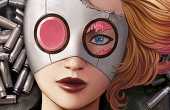Rhys
Contributing writer for The Artifice.
Junior Contributor II
- Articles
1 - Featured
1 - Comments
3
- Ext. Comments
3 - Processed
0 - Revisions
0
- Topics
1 - Topics Taken
0 - Notes
1
- Topics Proc.
0 - Topics Rev.
0
- Points
137 - Rank
X - Score
60
Latest Articles
Latest Topics
The New Frontier of Creativity: WhatAs social distancing measures have left us stuck in our homes, those that create and share art on YouTube, Instagram or other platforms have never had more time to add more user generated content to the never-ending mix of digital media. Plus, consumers this content have never had more time to scroll through these self-proclaimed artists’ creations. Now more than ever, with more and more people turning to the Internet both to produce and consume art, it is worth figuring out how to interpret, sort, and evaluate this type of art. I’m not going to suggest that all Instagram or YouTube content should be considered “high” art. One of the trade-offs of total accessibility is that, while it allows anyone with Internet access can create and upload material that they believe is artistic, it is difficult to sort out the good from the bad, and the best from the good. After all, it’s not as though having a broadband connection is a viable substitute for having talent, something meaningful to say, and an original way to say it. For example, a video of someone showing off their dance moves on TikTok can be entertaining, but does it pose a topical question, provoke discussion, or relate to greater issues of society, truth, or beauty? Probably not. But where do we draw the line? When has “art” been achieved? I believe the entire persona of “Poppy,” as she appears in YouTube videos, albums, and on stage, offers up avant-garde aesthetics and difficult-to-interpret cultural commentary. The videos she posts on her YouTube channel (made in collaboration with director Titanic Sinclair) are, to say the least, difficult to react to. In her debut video, “Poppy Eats Cotton Candy” (2014), she – as you might expect – wordlessly eats cotton candy; and in another, she says the words “I’m Poppy” for ten minutes, in a series of takes to camera. These videos may be perplexing, but they are oddly fascinating: they resist easy interpretation because, unlike most of the content uploaded by YouTube “personalities,” they seem to be more provocative than entertaining. Her work has the same theoretical value as “gallery art” – it contains layers of meaning, aesthetic appeal, and can be unpacked and analyzed to the same degree as any “high art.” But should it be? Or should there be NEW set of critical practices/criteria that are reserved only for digital media? |
Latest Comments
| Feminist Criticism of Society and Comic Books' Past | |
Wow, what a well-thought out piece. All the nuances and complexities of this explosive topic are discussed with tact! After 5 years spent in two universities, across two Arts degree programs, I have been getting a little tired of “problematizing” every cultural text we came across. Couldn’t we celebrate anything anymore? That’s what I keep thinking to myself. But you write in your essay, “criticism of a work’s prejudiced elements is not a proclamation that such a work should not exist and the artist should be barred from creating ever again” – this is true. I realize now that the enjoyment and critical analysis of a text aren’t mutually exclusive. | Problematic Creators: How Do We Interact With Their Work? |
I wonder, what is the future of the SFC? Is there a way to empower heroines without causing a disjunction between theme and story? Is there an alternative take to strength (such as Wonder Woman’s) that needs further exploration? | The Paradox of the Strong Female Character |

Some really great points. Your essay essentially concludes on the note that the inclusion more female creators will better the representations of women in fiction. I’m wondering, if certain areas of media – not just fiction, but news articles, essays, etc. – have creators that are predominantly women, is there a similar risk of misrepresenting male people/characters? If men were more present in, say, discussions of masculinity, there might be more understanding, and therefore respect, between genders.
Not to make it about masculinity or dismiss your argument; I was just thinking about how it can be applied to patterns I see in today’s non-fiction media.
Thanks for sharing this piece!